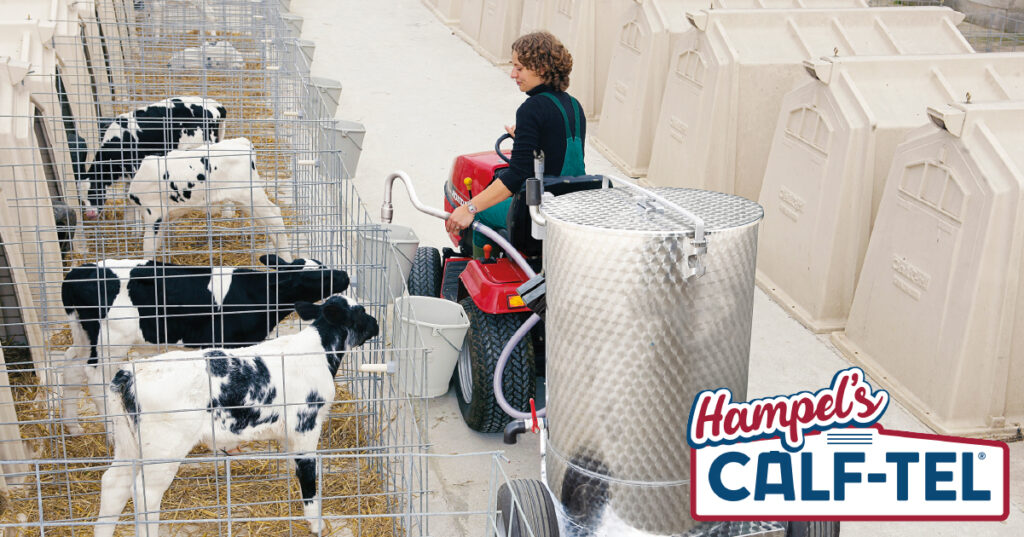by Sarah Morrison, Ph.D., W.H. Miner Institute

In the first three days after calving, the milk a cow produces changes in composition as it transitions from colostrum to whole milk. This transition takes approximately six milkings after calving (or three days) for this transition to occur. Transition milk provides less concentrated nutrients and bioactives than colostrum but is still more concentrated than whole milk.
Bioactives
A bioactive is defined as a component that has biological effect. This is an umbrella term but has received quite a bit of buzz as of late. Bioactives in milk or colostrum can include proteins, fatty acids, hormones, etc. that do not necessarily directly contribute to the nutrition of the calf but can interact with the calf, either at a local level (i.e. the gastrointestinal tract) or systemically for more whole-body action once absorbed by the calf. Furthermore, the extra nutrients in colostrum and transition milk can support growth of the calf and the gut to aid in earlier development.
Feeding Study
A study from Michigan State University evaluated the effect of feeding either milk replacer, transition milk, or a 50:50 mixture of colostrum replacer and milk replacer from day 2 to 4 of life. The calves were fed two feedings of colostrum replacer for their first two feedings after birth. Then on day 2 of life, calves started being fed the treatments three times a day with 2 quarts (1.89 L) per feeding. The treatments were milk replacer [27.8% CP and 10.3% fat dry matter (DM) basis which provided 1.17 Mcal metabolizable energy (ME) per feeding], pasteurized transition milk (25.9% fat, 41.8% protein DM basis, and 1.5 g/L IgG as fed, which contained 1.44 Mcal ME per feeding), or a 50:50 mixture of milk replacer and colostrum replacer which provided 14.6% fat, 38.6% protein DM basis, 15 g/L IgG, with 1.28 Mcal of ME per feeding). The figure shows fat and protein provided by the different feeds reported in this study.
The nutrient composition and IgG measured in the transition milk before pasteurization was higher than after pasteurization. This is likely a result of the pasteurization technique used. In this study, they pasteurized the transition milk at 161°F (71.7°C) for 15 seconds, which likely denatured some of the proteins in the transition milk. Recommendations from work done by Dr. Sandra Godden would indicate best practices of heat treatment for colostrum to be 140°F (60°C) for 60 minutes because of the IgG and high solids content. At Miner Institute, we have also heat-treated transition milk following recommendations for colostrum because of the higher solids content.
After four days of age, the calves were fed and managed similarly and body weights, blood samples, and health scores were measured throughout the preweaning period.
The Results
Calves that were fed both the transition milk and the 50:50 mixture had an increased body weight of 6.6 lb (3 kg) at the end of the preweaning period compared to the milk replacer group. The calves fed only milk replacer gained 1.23 lb/d (0.56 kg/d), while calves fed the transition milk and 50:50 mixture gained 1.37 lb/d (0.62 kg/d).
The different energy density between the diets fed from day 2 through 4 accounts for some, but not all, of the difference in gain. The authors estimated that the additional nutrients consumed by calves fed the transition milk and the 50:50 mixture would account for 2.84 lb (1.29 kg) of the gain for calves fed the transition milk, and (1.26 lb) 0.57 kg for the colostrum replacer mixture. Therefore, the difference between growth among the treatments would have been residual effects after the treatments ended on day 4 of age. There were no differences in health, with overall incidence of disease very low in all groups. Colostrum and transition milk have been shown to promote the maturation of the intestine, increase absorptive capacity and digestive efficiency. Therefore, some of the difference observed from feeding transition milk or colostrum replacer could be from the other bioactives and their action on development.
We continue to learn more on this topic; however, it seems like there are beneficial effects of feeding transition milk to calves in the first couple of days after colostrum feeding. As with colostrum, it is important to feed clean transition milk that is free of contamination either through heat treatment or good hygiene techniques.

About the Author
Sarah Morrison, Ph.D. is a Research Scientist at the William H. Miner Agricultural Research Institute in Chazy, NY. Sarah grew up on her family’s dairy farm in Addison County, Vermont. She has a Bachelor’s of Science degree in Animal Science from the University of Vermont and a Master’s of Science and a Ph.D. from the University of Illinois. Her research at Miner focuses on dairy cattle nutrition and management, with a focus on calves and heifers. She can be contacted with questions at morrison@whminer.com.
Reference
Van Soest, B., F. Cullens, M. J. VandeHaar, and M. Weber Nielsen.2020.Short communication: Effects of transition milk and milk replacer supplemented with colostrum replacer on growth and health of dairy calves.J. Dairy Sci. Article in press.
Courtesy of our dealer – CRI REPRODUCCIÓN ANIMAL MÉXICO SA DE CV.
Courtesy of our dealer – Holger & Laue Sales GmbH.
Courtesy of our dealer – Global Farming
Technology Co., Ltd.
